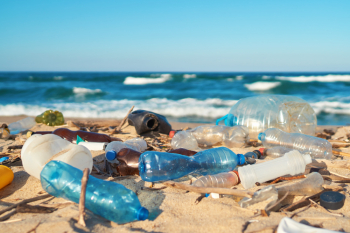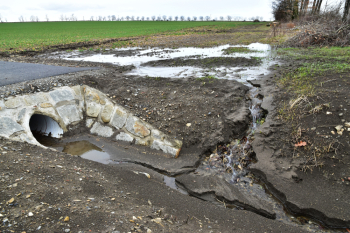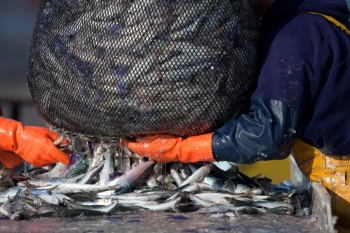Environment: Environmental Issues
Italy is facing a number of significant environmental issues that are affecting the country and its ecosystems. The following are seven of the major environmental challenges facing Italy:
- Air pollution: Air pollution in Italy is a growing concern, particularly in major cities such as Rome and Milan. This is largely due to emissions from transportation and industry.
- Water pollution: Industrial and agricultural activities, as well as the disposal of toxic waste, have led to significant water pollution in many areas of Italy, particularly in the south.
- Biodiversity loss: Italy's rich biodiversity is under threat from habitat destruction and fragmentation, over-exploitation of species, and the introduction of non-native species.
- Climate change: Like much of the world, Italy is experiencing the effects of climate change, including sea level rise, changing precipitation patterns, and more frequent extreme weather events.
- Waste management: Italy faces challenges in managing its waste, including limited landfill space, inadequate recycling and composting facilities, and a lack of investment in new technologies.
- Soil degradation: Soil degradation in Italy is a growing concern, particularly in urban areas, where soil is being lost to development and other land-use changes.
- Overfishing: Overfishing and habitat destruction are causing declines in many of Italy's fish populations, threatening the livelihoods of coastal communities and the health of the country's marine ecosystems.
These environmental issues are complex and interrelated, and addressing them will require a coordinated effort from government, industry, and the general public.
Air Pollution
Air pollution is a significant environmental issue affecting the environment and human health in Italy. It is caused by the release of various pollutants into the air from various sources, including industrial processes, transportation, and energy production. The following are some of the specific effects of air pollution on the environment in Italy:
- Health impacts: Air pollution can have severe effects on human health, causing respiratory problems, cardiovascular diseases, and cancer. For example, the high levels of fine particulate matter (PM2.5) in the air in cities like Milan, Rome, and Turin are linked to increased hospital admissions for heart and lung diseases.
- Impacts on ecosystems: Air pollution can harm wildlife and ecosystems by altering the soil chemistry, reducing the growth of vegetation, and changing the atmospheric conditions. For example, air pollution caused by the industrial sector has led to declines in bird populations in some areas of the country.
- Damage to heritage sites: Air pollution can cause significant damage to heritage sites and cultural landmarks, including sculptures, buildings, and monuments. For example, the acid rain caused by air pollution has damaged several iconic buildings in cities like Rome and Venice, including the Colosseum and the Doge's Palace.
- Impacts on agriculture: Air pollution can impact crop growth and reduce agricultural yields, affecting food security in the region. For example, high levels of ozone pollution in some regions of Italy have been linked to reduced yields of crops like tomatoes, potatoes, and wheat.
- Loss of biodiversity: Air pollution can lead to the loss of biodiversity, by altering the conditions necessary for the survival of certain species. For example, high levels of nitrogen oxides from transport emissions have been linked to declines in insect populations and changes in bird migration patterns in some areas of the country.
- Reduced visibility: Air pollution can reduce visibility, impacting the tourism industry and outdoor recreation activities in the region. For example, high levels of smog in cities like Milan and Rome can make it difficult for tourists to appreciate the beauty of the city and its landmarks.
In conclusion, air pollution has significant and far-reaching effects on the environment and human health in Italy. Addressing this issue requires a multi-faceted approach, including reducing emissions from industrial processes, transportation, and energy production, and promoting clean energy sources.
Water Pollution
Water pollution is a serious environmental issue that affects many countries, including Italy. This type of pollution is caused by the release of harmful substances into bodies of water, leading to negative impacts on aquatic life, human health, and the environment as a whole. The following are some of the specific effects of water pollution in Italy:
- Contamination of drinking water sources: Water pollution can lead to the contamination of drinking water sources, making it unsafe for human consumption. In Italy, water pollution from industrial waste, agricultural runoff, and sewage has been a significant concern for many years. For example, the Po River, which provides drinking water for over 15 million people, has been heavily polluted by industrial waste, leading to the release of toxic substances into the water supply.
- Impact on aquatic life: Water pollution also has a profound impact on aquatic life, leading to the death of fish, birds, and other organisms that depend on clean water to survive. For example in Italy, the Adriatic Sea has been impacted by high levels of sewage and agricultural runoff, leading to the decline of fish populations and the destruction of vital habitats for marine life.
- Spread of diseases: Water pollution can also lead to the spread of waterborne diseases, such as cholera, typhoid, and dysentery, as well as other health problems. For example in Italy, contaminated water has been linked to outbreaks of waterborne diseases in recent years.
- Decline of recreational activities: Water pollution also affects recreational activities, such as swimming, fishing, and boating, making them less appealing and less safe. For example in Italy, water pollution has led to the decline of popular tourist destinations, such as the beaches along the Adriatic Sea, as well as the decline of fishing industries in affected areas.
- Loss of biodiversity: Water pollution can also lead to the loss of biodiversity, as pollutants can harm or kill aquatic species, disrupt food chains, and destroy habitats. For example in Italy, water pollution has been linked to the decline of amphibian populations, such as the European frog, which is an important indicator of environmental health.
- Reduced soil fertility: Water pollution can also lead to reduced soil fertility, as contaminants can seep into the ground and affect the health of crops and other vegetation. For example in Italy, water pollution has been linked to reduced crop yields and the decline of forests and other habitats in affected areas.
In conclusion, water pollution has a wide range of negative effects on the environment and human health in Italy, and addressing this issue is critical to the preservation of the country's natural resources and the well-being of its citizens.
Biodiversity Loss
Biodiversity loss refers to the decline in the variety and abundance of plant and animal species in a given ecosystem. In Italy, biodiversity loss has been a growing concern in recent years, with a number of specific examples of the impacts of this phenomenon on the environment. The following are some of the most significant impacts:
- Loss of endemic species: Italy is home to a number of endemic species, which are found nowhere else in the world. Biodiversity loss can result in the decline or extinction of these species, reducing the overall richness and uniqueness of the country's natural heritage. For example, the disappearance of the Sardinian deer from the island of Sardinia is a notable example of a species lost due to habitat destruction and overhunting.
- Decline in pollinators: Pollinators, such as bees and butterflies, are critical to the health of many ecosystems and the maintenance of biodiversity. Biodiversity loss can result in declines in pollinator populations, which can have significant impacts on the health and productivity of the ecosystems they support. For example, the decline of pollinators in the Po Valley in northern Italy has been linked to the loss of flowering meadows and the intensification of agriculture in the region.
- Impacts on ecosystem services: Biodiversity loss can also have impacts on the ecosystem services that support human well-being, such as pollination, pest control, and nutrient cycling. For example, the decline of predator species in Italy, such as the Eurasian lynx and the gray wolf, has led to an increase in the populations of herbivores, which can have impacts on forest health and the survival of other species.
- Impacts on fisheries: Biodiversity loss can also have impacts on the health and productivity of aquatic ecosystems, such as rivers, lakes, and coastal waters. For example, the decline in fish populations in Lake Garda in northern Italy has been linked to changes in water quality, overfishing, and the introduction of non-native species.
- Impacts on recreational opportunities: Biodiversity loss can also reduce the variety and quality of recreational opportunities available to people, such as hiking, birdwatching, and fishing. For example, the decline in bird populations in the wetlands of the Po Delta in northern Italy has reduced the opportunities for birdwatching and other ecotourism activities in the region.
- Impacts on cultural heritage: Biodiversity loss can also have impacts on the cultural heritage of a region, including its history, traditions, and cultural identity. For example, the decline in traditional livestock breeds in Italy, such as the Maremmana and the Casentinese, is a notable example of the loss of cultural heritage associated with the loss of biodiversity.
In conclusion, biodiversity loss has a range of impacts on the environment and human well-being in Italy, from the decline of endemic species and pollinators to the impacts on ecosystem services, fisheries, and cultural heritage. Addressing this issue will require a multi-faceted approach that considers the causes of biodiversity loss and the means by which it can be reduced and prevented.
Climate Change 
Climate change refers to the long-term changes in temperature, precipitation, wind patterns, and other measures of climate that occur over several decades or longer. In Italy, as in many other parts of the world, climate change is having a range of impacts on the environment and on human society. The following are some of the most significant impacts:
- Rising temperatures: One of the most notable effects of climate change in Italy is the rise in temperatures, which is leading to a range of impacts on the country's ecosystems, such as the melting of glaciers and the shift of plant and animal ranges. For example, the retreat of the Alpine glaciers in the Italian Alps is a direct result of rising temperatures, and is having impacts on water resources, as well as on the recreational opportunities available in the region.
- Increased precipitation: Climate change is also leading to changes in precipitation patterns, including increased rainfall in some areas and decreased rainfall in others. For example, the increased rainfall in the northern regions of Italy is leading to flooding in some areas, as well as to the expansion of forests and the degradation of other habitats.
- Sea level rise: Another significant impact of climate change in Italy is sea level rise, which is threatening coastal communities, as well as the country's cultural heritage and tourism industry. For example, the sea level rise in Venice is leading to frequent flooding, and is threatening the city's famous canals and historic buildings.
- Impacts on biodiversity: Climate change is also having impacts on the biodiversity of Italy's ecosystems, as well as on the food webs and trophic interactions within those ecosystems. For example, the shift of plant and animal ranges in the country's Mediterranean forests is leading to the loss of some species and the expansion of others, with impacts on the overall health of the ecosystems.
- Impacts on agriculture: Climate change is also affecting agriculture in Italy, as well as the country's food security and the livelihoods of farmers. For example, the shift in growing conditions, such as changes in rainfall patterns and temperature, is leading to changes in the types of crops grown, as well as to the timing of planting and harvest.
- Impacts on health: Climate change is also having impacts on human health in Italy, through a range of mechanisms, such as increased exposure to heat stress, air pollution, and disease-carrying insects. For example, the increased frequency of heat waves in the country is leading to increased hospital admissions for heat-related illnesses, as well as to increased mortality rates among vulnerable populations.
In conclusion, climate change is having a range of impacts on the environment and human society in Italy, and is likely to have even more significant impacts in the future. Addressing this issue will require a comprehensive and coordinated response, including mitigation measures to reduce greenhouse gas emissions, as well as adaptation measures to prepare for the impacts of climate change that are already underway.
Waste Management 
Waste management refers to the collection, transportation, and disposal of waste materials in a manner that minimizes harm to the environment and public health. In Italy, as in many other parts of the world, the management of waste is an important environmental issue, with a range of impacts on the environment and human society. The following are some of the most significant impacts:
- Land contamination: Poor waste management practices can lead to land contamination, which can have a range of impacts on the environment and human health. For example, the illegal dumping of hazardous waste in Italy has led to contamination of soil and groundwater, with impacts on agricultural land and human health.
- Water pollution: Waste management practices can also lead to water pollution, which can harm aquatic life and impact the quality of drinking water. For example, the release of untreated sewage into the Mediterranean Sea in Italy is affecting the health of marine life, as well as the quality of beach water and the livelihoods of those who rely on the sea for food and tourism.
- Air pollution: Waste management practices can also contribute to air pollution, through the release of pollutants such as methane and other toxic gases from landfills. For example, the open burning of waste in some parts of Italy is releasing pollutants into the air, with impacts on air quality and human health.
- Impacts on biodiversity: Poor waste management practices can also have impacts on biodiversity, through the release of toxic chemicals into the environment and the destruction of habitats. For example, the improper disposal of electronic waste in Italy is releasing toxic chemicals into the environment, with impacts on wildlife and other organisms.
- Increased resource use: The improper disposal of waste can also lead to increased resource use, as new resources must be extracted to replace those that are wasted. For example, the dumping of food waste in Italy is contributing to the depletion of natural resources, as well as to greenhouse gas emissions.
- Economic costs: Poor waste management practices can also have significant economic costs, as a result of the costs of cleanup and remediation, as well as the lost opportunities for recycling and resource recovery. For example, the cleanup of contaminated sites in Italy is requiring significant investment of public funds, as well as the loss of valuable resources that could have been recovered through recycling and reuse.
In conclusion, the proper management of waste is essential for the protection of the environment and public health in Italy, and is an issue of great importance for the country's economic and social well-being. Addressing this issue will require a comprehensive and coordinated approach, including measures to improve waste management practices, as well as to promote recycling and resource recovery.
Soil Degradation
Soil degradation is a serious environmental issue in Italy and around the world, with far-reaching consequences for both the environment and human society. Soil degradation is the decline in soil quality due to various factors such as overuse, deforestation, and pollution. Here are six specific effects of soil degradation on the environment in Italy:
- Loss of soil fertility: Degraded soil is less productive and can no longer support crops as effectively as it once did. For example, intensive farming practices that strip the soil of nutrients can reduce crop yields and harm the livelihoods of farmers in Italy.
- Erosion: Soil erosion is the process by which soil is washed away by water or wind, leaving behind a barren landscape. For example, deforestation on the slopes of the Apennine Mountains in Italy has led to soil erosion and landslides.
- Water scarcity: Soil degradation can result in decreased water retention, leading to water scarcity in affected areas. For example, soil degradation in southern Italy has reduced the amount of water available for irrigation, making it difficult for farmers to grow crops.
- Biodiversity loss: Soil degradation can harm wildlife and disrupt ecosystems, leading to a loss of biodiversity. For example, deforestation in the Mediterranean region of Italy has led to the loss of habitats for native species, including birds and reptiles.
- Climate change: Soil degradation can contribute to climate change by releasing carbon dioxide into the atmosphere. For example, the release of carbon from degraded soil can add to the greenhouse gas emissions contributing to global warming.
- Food insecurity: Soil degradation can reduce the ability of the land to support crops, leading to food insecurity. For example, soil degradation in Italy has reduced the ability of farmers to produce enough food to meet the needs of the population, leading to dependence on imported food.
In conclusion, soil degradation is a serious environmental issue in Italy, with far-reaching consequences for both the environment and human society. The effects of soil degradation include loss of soil fertility, erosion, water scarcity, biodiversity loss, climate change, and food insecurity. It is up to individuals, businesses, and governments to take action to prevent soil degradation and protect this vital resource for future generations.
Overfishing
Overfishing refers to the practice of fishing at levels that deplete fish populations and damage the overall health of marine ecosystems. In Italy, overfishing has been a significant issue for many years, with a range of impacts on the country's marine environment. The following are some of the most significant impacts:
- Decline in fish populations: Overfishing can result in declines in the populations of targeted species, as well as in other species that are caught as bycatch. For example, the decline in bluefin tuna populations in the Mediterranean Sea has been linked to overfishing, as well as other factors such as climate change and the destruction of spawning habitats.
- Impacts on biodiversity: Overfishing can also have impacts on the overall biodiversity of marine ecosystems, as well as on the food webs and trophic interactions within those ecosystems. For example, the decline in shark populations in the Mediterranean Sea has been linked to overfishing, and has had impacts on the populations of other species that depend on these predators.
- Reduced ecosystem services: Overfishing can also reduce the provision of ecosystem services, such as the support of commercial and recreational fisheries, the provision of food, and the maintenance of water quality. For example, the decline in oyster populations in the Gulf of Genoa has been linked to overfishing and pollution, and has had impacts on the health of the ecosystem and the local economy.
- Impacts on livelihoods: Overfishing can also have impacts on the livelihoods of people who depend on fishing for their income, as well as on the communities that depend on those livelihoods. For example, the decline in swordfish populations in the Mediterranean Sea has had impacts on the incomes and livelihoods of fishing communities in Italy, as well as in other countries in the region.
- Impacts on food security: Overfishing can also have impacts on food security, as it can reduce the availability of fish as a source of protein and other nutrients. For example, the decline in anchovy populations in the Adriatic Sea has had impacts on the food security of people in coastal communities in Italy, as well as in other countries in the region.
- Impacts on recreational opportunities: Overfishing can also reduce the quality and availability of recreational opportunities, such as fishing, boating, and other water-based activities. For example, the decline in tuna populations in the Mediterranean Sea has reduced the quality of the recreational fishing opportunities available in the region.
In conclusion, overfishing is a major issue in Italy, with a range of impacts on the country's marine environment and the people who depend on it. Addressing this issue will require a combination of measures, including the regulation of fishing activities, the protection of critical habitats and species, and the promotion of sustainable fishing practices.
Copyright © 1993—2024 World Trade Press. All rights reserved.

 Italy
Italy 